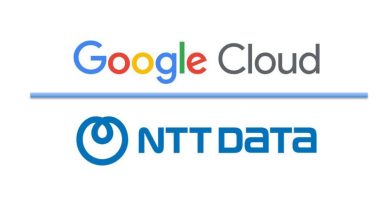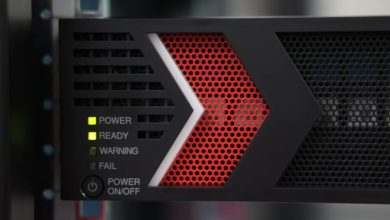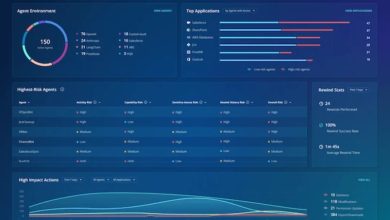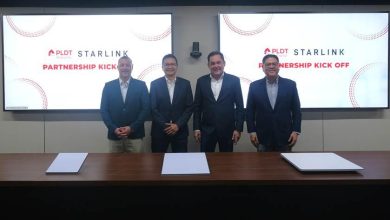Google Cloud Unveils Multiple Industry-First Enterprise AI Innovations at Next ‘25, Showcases Southeast Asia Customer Momentum
Google Cloud unveils major AI and infrastructure innovations at Next ‘25, showcasing enterprise momentum across Southeast Asia and its commitment to open, multi-agent AI platforms.

At Google Cloud Next ‘25, Google Cloud showcased the transformative impact that its enterprise AI advancements have been driving for organizations in Southeast Asia. At the same time, the company unveiled new innovations – across every layer of its fully-integrated AI technology stack – to accelerate organizations’ ability to derive tangible value from their AI investments while meeting evolving sovereignty, security, privacy, and regulatory requirements.
In 2024, Google Cloud delivered more than 3,000 new technology advancements that have been embraced by the likes of Astra International, Bank Jago, Bareksa, Blibli.com, Erajaya, Indosat Ooredoo Hutchison, Telkomsel, Vidio; AI Singapore, Centre for Strategic Infocomm Technologies (CSIT), DBS Bank, FairPrice Group, Enterprise Singapore; Bangkok Bank, Central Retail, Chulalongkorn University, Finnomena, Gulf Edge, the Stock Exchange of Thailand (SET); Bank Muamalat, CARSOME Group, Dagang NeXchange Berhad (DNeX), Gamuda, Maxis, and Malaysia’s National AI Office. This has contributed to a 20x increase in Vertex AI usage by organizations globally in the past year alone, driven by their rapid adoption of industry-leading AI models like Gemini, Imagen, and Veo. Within Google Workspace, the impact has been equally profound, with more than two billion AI assists provided monthly to business users globally, fundamentally reshaping how work gets done.
“The opportunity presented by AI is unlike anything we’ve ever witnessed. It holds the power to improve lives, enhance productivity, and reimagine processes at a scale previously unimaginable,” said Thomas Kurian, CEO, Google Cloud. “Google has been bringing machine learning into our products for more than 20 years, and our investment in AI is deeply rooted in our core mission: to organize the world’s information and make it universally accessible and useful. Google Cloud is a natural extension of Google’s mission; we’re just doing it for organizations. We view AI as the most potent catalyst for helping our customers, developers, and partners advance their missions.”
Reinforcing its commitment to openness, interoperability, and bringing the best of Google to organizations, Google Cloud announced significant new innovations across its portfolio spanning infrastructure; data and AI platforms, AI models, and AI agents; and cybersecurity, including multi-cloud capabilities.
Unleashing unprecedented computational power with Google’s planet-scale infrastructure
Organizations can already tap Google Cloud’s planet-scale computing infrastructure, hosted in 42 Google Cloud regions (i.e., clusters of cloud data centers) around the world including Indonesia and Singapore, with rapid expansion to Malaysia and Thailand already underway.
Through its cloud regions, Google Cloud provides AI Hypercomputer, a supercomputing system that comprises hardware, software, and flexible consumption models, to help organizations simplify AI deployment with industry-leading price-performance.
This week, Google Cloud introduced new advancements to AI Hypercomputer, including:
● Ironwood Tensor Processing Units (TPUs): Ironwood, Google’s seventh-generation TPU, is its most performant and scalable custom AI accelerator (i.e., AI chips) to date, and the first designed specifically for AI inference. Featuring more than 9,000 chips per pod, it delivers a staggering 42.5 exaflops of compute per pod, meeting the exponentially growing demands of the most sophisticated thinking models, such as Gemini 2.5. Ironwood is also 2x more power-efficient than Google’s sixth-generation TPU and 30x more power-efficient than Google’s first TPU from 2018.
● Expansive NVIDIA GPU Options: Google Cloud is delivering AI hardware optionality to organizations with the availability of A4 and A4X virtual machines (VMs) powered by NVIDIA HGX B200 and NVIDIA GB200 graphics processing units (GPUs). Google will also be the first cloud provider to offer NVIDIA’s next-generation Vera Rubin GPUs.
● Cluster Director: Cluster Director enables organizations to deploy and manage vast numbers of AI accelerators as a single, unified unit of compute, thereby maximizing performance, efficiency and resilience.
● Google Kubernetes Engine (GKE) Inferencing: New inference capabilities in GKE, including gen AI-aware scaling and load-balancing features, can reduce AI serving costs by up to 30%, decrease tail latency by up to 60%, and increase throughput by up to 40% based on internal benchmarks.
● Pathways Availability: Google’s own distributed machine learning runtime, Pathways, is now available for the first time to organizations. Developed by Google DeepMind, Pathways enables state-of-the-art, multi-host inferencing for dynamic scaling with exceptional performance at optimal cost.
Google data centers and Google Cloud regions are connected by Google’s planet-scale networking infrastructure – more than two million miles of fiber (i.e., terrestrial and subsea cables) across more than 200 countries and territories – that operates at “Google speed” (i.e., near-zero latency) to support essential services like Gmail, YouTube, and Google Search for billions of users worldwide.
Starting today, Google Cloud is making this global private network available to organizations everywhere through a new service called Cloud Wide Area Network (WAN). Cloud WAN is a fully-managed, reliable, and secure service that transforms enterprise WAN architectures. It delivers a remarkable improvement of up to 40% in network performance, while simultaneously reducing total cost of ownership by up to 40%.
With access to Google Cloud’s planet-scale supercomputing and networking infrastructure, organizations can tap a truly global and resilient foundation that is built for the AI era.
In addition, Google Cloud announced that Google’s Gemini models will be available on Google Distributed Cloud (GDC), bringing Google’s most capable models to on-premises environments. It has partnered with NVIDIA to bring Gemini models to NVIDIA Blackwell systems, with Dell as a key partner, so they can be used locally in air-gapped and connected environments. This is crucial for organizations, such as those in the public sector, that are subject to strict regulatory or sovereignty requirements and have not been able to access the latest AI technology because they must store their data on-premises.
Google’s leading models: Bringing the best of Google DeepMind to organizations
Through its Vertex AI platform, Google Cloud provides access to Google DeepMind’s diverse spectrum of world-class frontier models – each meticulously designed and continuously enhanced to meet the unique needs of various organizations. These include:
● Gemini 2.5 models: Gemini 2.5 models are thinking models, capable of reasoning through their thoughts before responding, resulting in enhanced performance and improved accuracy. Two weeks ago, Google Cloud brought Gemini 2.5 Pro to Vertex AI. At Next ‘25, Google Cloud announced that Gemini 2.5 Flash is also coming to Vertex AI. Gemini 2.5 Flash is ideal for everyday use cases like providing fast responses during high-volume customer interactions, where real-time summaries or quick access to documents are needed. Gemini 2.5 Flash adjusts the depth of reasoning based on the complexity of prompts, and organizations can control performance based on their budgets.
● Generative media models:
○ Imagen 3, Google’s highest quality text-to-image model, now has improved image generation and inpainting capabilities for reconstructing missing or damaged portions of an image.
○ Chirp 3, Google’s audio generation model, now includes a new way to create custom voices with just 10 seconds of audio input, enabling enterprises to personalize call centers and establish unique brand voices. In addition, new transcription features separate and identify individual speakers in multi-speaker recordings, significantly improving the clarity and usability of transcriptions for applications like meeting summaries, podcast analysis, and multi-party call recordings.
○ Lyria, the industry’s first enterprise-ready text-to-music model, transforms simple text prompts into 30-second music clips, opening up new avenues for creative expression. It produces high-fidelity audio, meticulously capturing subtle nuances and delivering rich, detailed compositions across a range of musical genres. With Lyria, organizations can now quickly create soundtracks for marketing campaigns, product launches, immersive in-store experiences, podcasts, and other digital content that align with their brand.
○ New features that help organizations leverage Veo 2, Google’s industry-leading video generation model, in Vertex AI to create videos, edit them, and add visual effects. These include inpainting to remove unwanted background images, logos or distractions, allowing professional edits without manual retouching; outpainting to extend the frame of existing video footage, allowing organizations to optimize video for different screen sizes and platforms; sophisticated cinematic techniques to provide shot composition, camera angles and pacing; and interpolation which lets companies define the beginning and end of a video sequence, with Veo seamlessly generating the connecting frames.
● Models for scientific discovery:
○ WeatherNext models, developed by Google DeepMind and Google Research, enable fast, accurate weather forecasting. They are now available in Vertex AI, allowing organizations to customize and deploy them for research and industry applications.
○ AlphaFold 3, developed by Google DeepMind and Isomorphic Labs, can predict the structure and interactions of all of life’s molecules with unprecedented accuracy. They can now be deployed using Google Cloud infrastructure for non-commercial use, enabling researchers to process tens of thousands of protein sequences while minimizing computing cost.
Vertex AI: The most comprehensive platform for AI innovation
Vertex AI is Google Cloud’s enterprise platform for building and managing AI applications and agents, and model training and deployment. At Next ‘25, Google Cloud announced new advancements in Vertex AI that improve organizations’ ability to manage their AI initiatives, including:
● More than 200 AI models in Vertex AI Model Garden: Organizations can now access Google’s models; third-party models from companies like Anthropic, AI21, Mistral, CAMB.AI, and Qodo; and open models from DeepSeek, Meta, and The Allen Institute on Vertex AI.
● Custom training and tuning: Organizations can now custom train and tune all of Google’s first-party model families, including Gemini, Imagen, Veo, embedding, and translation models, and open models like Gemma, Llama, and Mistral using their own data.
● Connecting to data sources across multiple clouds: To ensure that their models have access to the right information at the right time, regardless of whether that data is stored in Google Cloud, AWS, Microsoft Azure, Oracle, or others, organizations can leverage Vertex AI’s pre-built connectors and APIs.
● Grounding on even more trusted sources: In addition to Grounding with Google Search, Vertex AI now offers Grounding with Google Maps to ensure that AI model outputs relying on location context are factual and fresh. Organizations can also ground their AI model outputs on additional third-party sources like Cotality, Dun & Bradstreet, HG Insights, S&P Global, and ZoomInfo.
● Vertex AI Dashboards and Model Optimizer: Vertex AI Dashboards help organizations monitor AI model usage, throughput, and latency, as well as troubleshoot errors, providing them with greater visibility and control; while Vertex AI Model Optimizer uses Google’s unique understanding of its Gemini models to automatically direct a query to the most performant model and tools, based on an organization’s quality, speed, and cost preferences.
● Live API: To enable conversational interactions in real-time, Live API offers streaming audio and video directly into Gemini models. This allows organizations’ AI agents to process and respond to rich media in real-time, opening new possibilities for immersive, multimodal applications.
Expanding Vertex AI to enable a multi-agent ecosystem
Vertex AI is the most open developer AI platform and the only one delivering multi-agent solutions (i.e., enables multiple AI agents to work together). AI agents are intelligent systems that exhibit reasoning, planning, and memory capabilities. They are capable of thinking multiple steps ahead and working seamlessly across software and systems to accomplish tasks on your behalf and under your supervision.
New capabilities that will help organizations move toward a multi-agent ecosystem, regardless of where they stand in their AI journey or which technology stack they have chosen, include:
● Agent Development Kit (ADK): Google Cloud’s new open-source framework that simplifies the process of building sophisticated multi-agent systems while maintaining precise control over agent behavior. With ADK, organizations can build an AI agent in under 100 lines of intuitive code. ADK supports Model Control Protocol (MCP) to allow developers to easily plug-in available tools.
● Agent2Agent (A2A) protocol: Google Cloud is the first hyperscaler to create an open A2A protocol to support multi-agent ecosystems, enabling agents to talk to each other using the same language even if they are created by separate companies on separate technology stacks. More than 50 partners, including Accenture, Deloitte, Salesforce, SAP, and ServiceNow are actively contributing to this protocol, representing a shared vision for interoperable, multi-agent systems.
● Agent Garden: Agent Garden is a collection of ready-to-use samples and tools, directly accessible in ADK. It allows organizations to connect their agents to more than 100 pre-built connectors, custom APIs, integration workflows, or data stored in cloud systems like BigQuery and AlloyDB.
No matter how organizations choose to build agents, Google Cloud can help connect them to other leading enterprise data and application companies.
Google Agentspace: Empowering every employee with AI
First announced in December 2024, Google Agentspace brings together Google-quality enterprise search, conversational AI, Gemini models, and third-party agents. This empowers employees to find and synthesize information from within their organization, converse with AI agents, and take action with their enterprise applications. For example, employees can already use Google Agentspace to access Google-built AI agents like NotebookLM, which allows them to upload multiple source materials – like PDFs, Google Docs, website URLs, and YouTube videos, summarize the content, ask questions about the materials, and format responses in a specific way.
Google Agentspace enhancements announced at Next ‘25 include:
● Integration with Chrome Enterprise: This allows employees to search and access all their enterprise resources directly from the search box in Chrome, streamlining workflows and boosting productivity.
● Agent Gallery: This gives employees a single view of available agents across the enterprise, including those from Google, internal teams, and partners, making agents easy to discover and use.
● Agent Designer: A no-code interface for creating custom agents that automate everyday work tasks. Agent Designer helps employees, regardless of their technical experience, to adapt agents to their individual workflows and needs.
● Idea Generation agent: This agent uses a tournament-style framework to effectively rank ideas based on employee-defined criteria, and can help employees refine or generate new ideas.
● Deep Research agent: This agent explores complex topics on employees’ behalf and provides them with findings in a comprehensive, easy-to-read report.
● Google Agentspace search on GDC: With public preview starting in Q3 2025, Google Agentspace search provides all enterprise knowledge workers with out-of-the-box capabilities that unify access to all their data in a secure, permissions-aware way.




